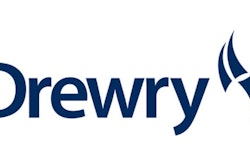
As product companies know all too well, success depends as much on what happens after the sale as it does on the sale itself. How efficiently and intelligently you handle everything from shipments and customer support through dispatch and asset recovery can make a huge difference to your top and bottom lines.
According to Everest Research, aftersales accounts for 75 to 80 percent of a product company’s core profits and can be a major revenue center as well. However, many businesses are leaving an astonishing amount of post-sales revenue and profit on the table.
Why? Managing this service supply chain (SSC) is complex and optimizing it can be quite difficult. The complexity starts with the inherent unpredictability of the end customer. For example, end customers may forget about a scheduled service appointment or abruptly, and repeatedly, reschedule it. They may return defective parts that, unbeknownst to them, actually work perfectly, may send truly defective products back to the wrong location, or perhaps never get around to sending them back at all.
Adding to this complexity is the fact that product companies often lack the insights needed to optimize their service supply chain. Existing methodologies, which may include a combination of trial and error, rules of thumb and sound inventory practices, are often not up to the task. They may fall short by not exploiting the wealth of data available; not providing early and in-depth visibility into the customer experience, SSC processes and third-party logistics operations; not driving actions that proactively solve problems; and not improving customer satisfaction or reducing cost to serve.
The Analytics Advantage
Despite these challenges, optimizing the post-sales supply chain is entirely possible and very doable. The secret is to use analytics and technology as the key drivers of change, complemented by proactive customer outreach, domain expertise and process management.
A step-by-step, scalable, analytics-based approach can convert uncertainty to measured risk, and turn poor-quality data into measurably higher quality data and actionable insights. Analytics-based approaches for SSC are more successful when they use predictive modeling, causal-effect analytics and in-depth voice-of-the-customer (VOC) analytics to pinpoint areas of concern and waste, and identify opportunities for post-sales supply chain improvement. In-depth VOC, in particular, plays a critical role by drilling down in three key areas:
- Direct VOC from direct communications with the end customer.
- Voice of the product, which includes machine-to-machine (M2M) data tied to the end-customer’s experience.
- Voice of the process, which includes monitoring the stability of the process and measuring improvements—again tied to the customer’s experience.
By using advanced analytics, you can segment your customer population, understand ecosystem partner nuances, and identify how to improve processes and economic value across each segment of the customer and partner base, and every aspect of the post-sale supply chain. And by combining analytics with purpose-built SSC technology, you can optimize process workflow and leverage automation to drive even greater efficiencies.
Analytics in Action
Post-sales supply chain analytics provide the visibility and intelligence needed to help companies save millions of dollars annually, reap significant revenue gains and improve the customer experience to such an extent that you can differentiate on operational and service excellence, rather than price.
Let’s look at five post-sales processes that can be optimized through advanced analytics: transportation order management, service chain triage, retention/remorse returns, reverse logistics and inventory carrying.
1. Transportation Order Management
Many companies spend much more than is necessary shipping spare and service parts. For example, by general contract or business practice, parts may be sent using next flight out or same-day transport, only to sit around unused for days. Perhaps the customer never really needed parts that quickly or maybe the customer’s delivery needs changed after the contract was signed.
By establishing a pre-call process with the customer, conducting current state assessment and doing cross-segmentation to analyze data (i.e., type, cost and level of transportation required by contract, type of shipment actually used, product cost, inventory holding cost, and severity level of customer service problem), you can dramatically reduce post-sales transportation costs and better meet customer needs. For instance, a global Fortune 500 technology company that used these techniques quickly identified $8.7 million that could be saved annually by reducing unnecessary same-day and next-business-day shipments. These savings would come from lower shipping costs, and reductions in truck rolls and part re-shipments.
2. Service Chain Triage
Service triage can be a tremendous source of frustration for customers and a big cost sinkhole for vendors, as a leading consumer products warranty provider can attest. The company attempted remote troubleshooting, but due to uneven success, it ended up with higher truck roll rates, so technicians needed to go on site to solve problems, and lower customer satisfaction scores.
What approach works better? Gathering information about service events (i.e., date, time, location, product, part, diagnosis, issue expected to be solved, issue actually solved), customer ratings of technician performance, cost of service parts and spare parts, machine-to-machine (M2M) data, and field inventory position of service and spare parts, and then applying predictive analytics and causal-effect analytics. In this instance, by using customer experience scorecards and a comprehensive triage knowledge base developed for Level 1 remote tech support, the company was able to improve truck roll avoidance by more than 60 percent in just six months, while maintaining a first-call resolution rate of 99 percent.
3. Retention/Remorse Returns
Even leading companies have products or product lines with lower-than-expected retention rates or, in other words, higher remorse returns rates. Frequently, the returned products are designated No Trouble Found (NTF) or No Fault Found (NFF). They work, but customers don’t know how to properly use them.
By using in-depth VOC, predictive analytics and casual-effect analytics, you can identify customers with a high propensity for remorse returns, and gain early visibility into potential NTF and NFF instances—and then proactively reach out to educate appropriate customers. You can also identify parts that need to be better designed for service supply chain optimization, for example, to reduce remorse returns, and increase usability and value for end-of-life (EOL) returns.
A leading wireless company conducted analyses using inputs on communication chain performance based on customers eligible to be contacted, attempted contacts, live contacts and meaningful contacts; daily product sales and customer remorse returns; and six months of historical product sales and customer remorse returns. As a result of this analytics-driven approach, the company was able to reduce remorse returns by 25 percent, realize improvement in annual lifecycle revenue and triple return on investment (ROI), while also gaining nine points on Net Recommender ratings by their customers.
4. Reverse Logistics
Getting customers to return unwanted or seemingly defective parts and products can be challenging. Ensuring they return them quickly is even more so. However, if you’re not successful at both, you’re going to end up spending a lot more money on product/part acquisition.
Companies that want to boost recovery rates and velocity should examine daily and historical replacement product shipments, daily and historical returns, product cost and customer contract levels. A top broadband provider realized great results by implementing VOC, predictive analytics (including daily risk scoring), proactive customer outreach with scripts tailored to the needs of key customer segments and time-of-day call optimization. The company improved recovery rates and realized $3.5 million annually in the initial rollout in just one city.
5. Service Parts Inventory Carrying
While it’s possible for some companies’ manufacturing processes to require only a few hours of inventory, in the post-sale supply chain, companies are more likely to have 15 days or more of service parts inventory tied up in the field.
In many ways, lowering inventory carrying costs is the outcome of the analytic-based approaches mentioned above. Benchmark results show opportunities for improvements in recovery rates, starting with 50.5 percent for one company and leading to 97 percent recovery rates for another company. The outcome, measured in days of inventory, is 48.7 days and 13.3 days, respectively.
If you’re not leveraging advanced analytics for your post-sales supply chain, you may want to check it out. There’s an enormous amount of untapped revenue, profit and customer goodwill to be found by effectively mining the data in your service supply chain.

















